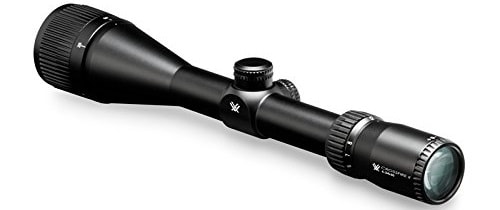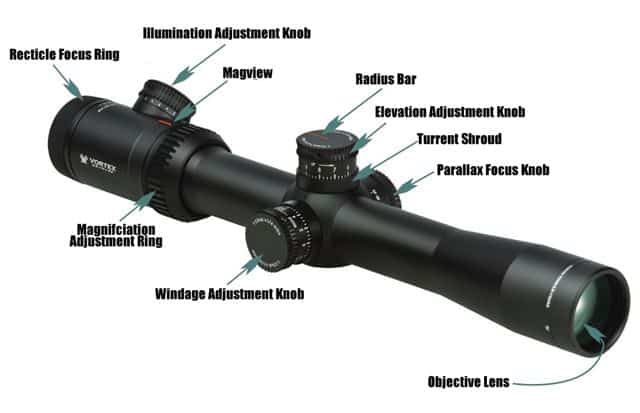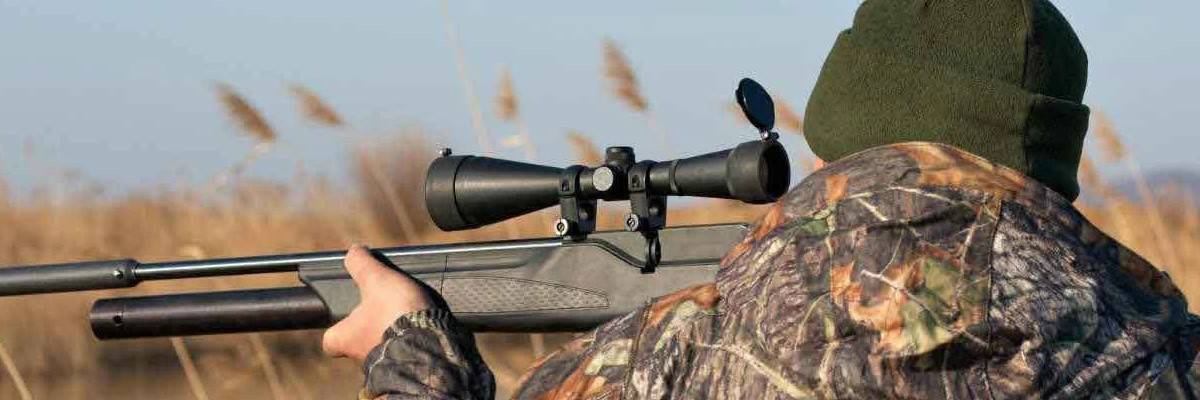Rifle hunting represents an actual test of courage for many sportsmen. It requires ability, desire, and, above all, patience, which distinguishes rifle hunters from ordinary folk who know how to wield guns. Though it is a worthwhile sport that should be pursued, it can be tricky to acquaint yourself with the basics of rifle hunting and using scopes.
If you want to explore how scopes work, this guide has got you covered. It contains every essential piece of information about rifle scopes.
What is a Rifle Scope?
A rifle scope is an attachment placed on top of a rifle that helps enhance the shooter’s target. It does this by aligning a firearm’s barrel with the target to allow the user an aiming point.
How Does a Rifle Scope Work?
A rifle scope provides magnification of the target to the user, thus enabling them to take better aim and be more precise in their shots. They function similarly to telescopes.

Rifle scopes adopt the usage of various lenses to operate, which we will go into detail about later. One of these lenses is the objective lens, which allows light to come into the scope body, making the sight picture visible to the shooter. The focus lens is another of these lenses which helps focus objects in the scope.
Types of Rifle Scopes
There are a variety of rifle scopes available to hunters. Which type you require depends on the terrain, conditions, and target distance. A general overview of the most common types of rifle scopes are given below:
- Fixed Power Scope: As the name suggests, this scope has a fixed level of magnification, so it is impossible to zoom in or out on these scopes. Due to this limitation, they are cheaper than other types of scopes.
- Variable Power Scopes: With a variable power scope, you can adjust the scope’s magnification level.
- Night Vision Scopes: These are for those individuals who prefer to do hunting activities at night or in areas with minimal lighting available. Night vision scopes have a built-in infrared illuminator, allowing users to detect movements in these conditions.
It is also crucial to understand the difference between rifle scopes and gun sights. Though they are both used to aim at a target, a rifle scope offers some magnification to the user, whereas gun sights do not. Some of the more frequently used gun sights are Open Sights, Aperture Sights, Red Dot Sights, and Laser Sights.
Components of a Rifle Scope
Lenses are the most crucial components of the rifle scope, with the objective lens being the larger one. You can find it at the periphery of the scope (at quite some distance from the weapon’s stock). It is used for light transmission in the direction of the ocular lens, the lens adjacent to your naked eye.

The light that crosses the objective lens is concentrated on a spot within the scope. And the ocular lens amplifies the rays from the focal planes. Rifle scopes also come with reticles. It is also called crosshair and provides the aiming point in your field of view in a rifle scope.
An erector tube is an object found between the focus lens and the objective lens. This tube contains magnifying lenses that allow you to view targets at different magnifications.
Rifle scopes also come with settings to fine-tune the scope to align it properly with the weapon. Windage adjustment and elevation adjustment are two main settings that determine the scope’s sight. The windage control does the parallel fine-tuning on a scope, whereas the elevation setting determines the upright control.
The tube is the weapon’s main body. It is available in two main diameters: a one-inch tube and 30mm tube.
Mounting a Rifle Scope
Before mounting a rifle scope, you should hold your rifle in the most comfortable position so that you do not experience muscle cramps while firing.
Ensure that you have all the necessary mounting equipment on hand. These include the scope, the unloaded rifle, the scope mount or base, and the installing circlet, along with a toolkit. The steps needed to mount a rifle scope are explained below:
- A scope base should be attached to the rifle, with clamps or screws, and the mounting rings should match the scope base to avoid serious repercussions later on.
- Mounting rings are basically two-piece clamps. The lower part of these rings is attached directly to the base of the screw. The upper half of the rings will hold the scope in place.
- Install a bore sighter in the rifle’s muzzle.
- Adjust your rifle scope to the required magnification and place it onto the mounting rings’ bottom half.
- Align the reticle of your scope.
- Adjust eye relief by positioning the scope forward enough to ensure your eyes are safe from recoil.
Sighting-in a Rifle Scope
Sighting-in a rifle scope is the process of aligning the scope with the direction in which the barrel of the rifle is facing.
After the scope is mounted correctly and adjusted, you should determine what distance you want your scope sighted in. The recommended length would be for a target that is at least 100 yards away from your spot. Thus, it is necessary to find such a place that allows you to put your target.
Be sure to take various ammunition types to figure out which one will serve you and your rifle requirements in the best manner.
Various tools can help with sighting in a scope, the most convenient amongst which is a bore-sight.
When installing the bore-sighter in the muzzle, the reticle of your scope must be in tune with the bore sighter’s reticle. That’s where the windage and elevation adjustments come into play.
Next, it is important that the bore sighter is removed from the weapon’s muzzle as loading and firing the weapon with the bore sighter installed can lead to your rifle being damaged or you incurring severe injuries.
Next:
- Place a loaded cartridge into the weapon.
- Point at the focal point of the earmark and shoot.
- Regardless of whether your shot achieved its target, reload your rifle and fire more shots using the different types of ammunition you brought.
- Track your progress, as this will help you find the best and most suitable ammo type.
And there you go, your sighting-in process is complete.
Final Thoughts
These rifle scope basics will go a long way towards aiding you to successfully carry out your hunting activities and learn how a rifle scope works. Make sure to test out all the different scopes in various environments to ensure that you get a proper grip on the mechanisms. Happy hunting.
Mike Fellon is an experienced firearms enthusiast and optics expert. He delivers unbiased and detailed rifle scope reviews. Born and raised in Dallas, Texas. He inherited his hunting passions after his father John – he was fascinated by his stories, hearing how much attention, focus, dedication and patience he invested in shooting every animal. When he was old enough, his father first allowed him to shoot some cans and bottles with his shotgun, and then took him hunting – it was love at first sight. Mike has never stopped shooting ever since.

